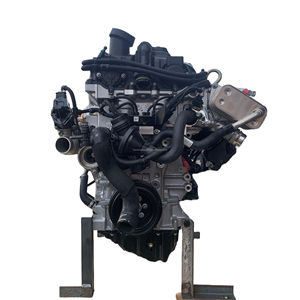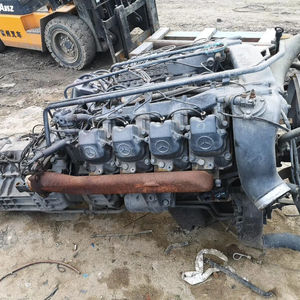Budget Friendly Opel Corsa Engine Options for Your Budget plan
Exploring the Inner Operation of a Compact Car's Engine System
As motorists, we usually take for given the complex processes that happen within the boundaries of our automobile's engine system. In this expedition of a compact automobile's engine system, we will certainly decipher the internal workings of this mechanical symphony, dropping light on the mysteries that drive us ahead on our day-to-day journeys.
Combustion Process Introduction
The burning procedure in a compact car's engine system is an essential mechanism that successfully converts gas right into energy to power the car. This procedure takes place within the combustion chamber of the engine, where fuel and air mix, spark, and generate controlled surges. The burning procedure includes four major phases: consumption, exhaust, power, and compression.
Throughout the intake stage, the piston moves downward, drawing in a mix of air and gas right into the combustion chamber. The following stage, compression, entails the piston moving upward, pressing the air-fuel mixture to boost its potency. Ultimately, in the power stage, the ignition system ignites the compressed mix, causing a fast expansion of gases that requires the piston pull back. This downward motion creates the power needed to drive the automobile. In the exhaust phase, the burned gases are expelled from the combustion chamber with the exhaust shutoff, preparing the chamber for the following cycle. This cyclic burning procedure is essential to the procedure of a portable car's engine system, making certain efficient energy conversion for propulsion.
Piston and Cyndrical Tube Interaction

The piston's specific fit within the cyndrical tube is essential for maintaining ideal compression and stopping power loss throughout burning. Limited clearances in between the piston and cyndrical tube wall surfaces make sure reliable securing, permitting the piston to relocate efficiently without permitting gases to leak past. Proper lubrication is also crucial to minimize rubbing and use between these elements, enhancing longevity and efficiency.
In addition, the layout and products utilized in manufacturing the piston and cylinder influence engine performance and durability. Modern engines usually use light-weight yet resilient materials like aluminum alloys for pistons and cyndrical tube linings to minimize inertia and the original source improve thermal efficiency. Generally, the harmonious communication in between the piston and cylinder is basic to the engine's capability and general performance.
Gas Injection System Functionality
Gas injection systems in compact lorry engines play an essential function in exactly supplying gas to the burning chamber for regulated and effective ignition. The fuel shot system works by injecting gas into the burning chamber at the optimal minute during the engine's operation (opel corsa engine). This specific timing makes sure that the fuel blends uniformly with the air for appropriate combustion, leading to enhanced fuel performance and decreased discharges
There are mostly two kinds of gas injection systems utilized in compact automobile engines: port gas injection (PFI) and direct gas shot (DFI) PFI systems inject fuel right into the intake port before the consumption valve, while DFI systems inject gas straight into the combustion chamber. Both systems have their advantages, with DFI using better fuel atomization and PFI supplying a more economical solution.
Comprehending Engine Cooling Systems
Effective operation of a compact vehicle's engine relies greatly on the performance of its cooling mechanisms. The air conditioning system in a portable car commonly is composed of numerous elements working together to manage the engine temperature level. Comprehending these engine cooling mechanisms is vital for keeping the performance and longevity of a portable automobile's engine system.

Exhaust System Components Explained
The ideal functioning of a portable automobile's engine cooling mechanisms depends on a corresponding system understood as the exhaust system, which consists of different crucial elements for ensuring effective emissions and engine performance. The exhaust manifold accumulates exhaust gases from the engine's cylinders and courses them to the catalytic converter.
One essential part of the exhaust system is the oxygen sensing unit, which monitors the oxygen degrees in the exhaust gases to help control gas usage and make certain optimal engine performance. opel corsa engine. Furthermore, the resonator might be existing in some exhaust systems to decrease noise degrees. Overall, the exhaust system plays a crucial duty in maintaining engine efficiency, minimizing unsafe emissions, and making sure a quieter driving experience for portable car owners

Conclusion
To conclude, the compact vehicle's engine system is a complex mix of elements that interact to facilitate the combustion procedure, convert fuel right into power, and expel waste gases. Comprehending the internal operations of the engine system, including the piston and cylinder interaction, gas shot system, engine cooling click site systems, and exhaust system elements, is crucial for maintaining ideal performance and performance of the lorry.
The combustion process in a small vehicle's engine system is a vital device that successfully transforms fuel into energy to power the automobile.Gas shot systems in portable car engines play an essential duty in precisely delivering fuel to the combustion chamber for effective and controlled ignition.There are primarily 2 kinds of gas injection systems used in compact vehicle engines: port gas shot (PFI) and straight fuel injection (DFI) Recognizing these engine air conditioning systems is crucial for preserving the efficiency and durability of a portable lorry's engine system.
The optimal performance of a small car's engine cooling systems depends on a complementary system known as the exhaust system, official site which comprises various vital elements for making certain reliable exhausts and engine performance.